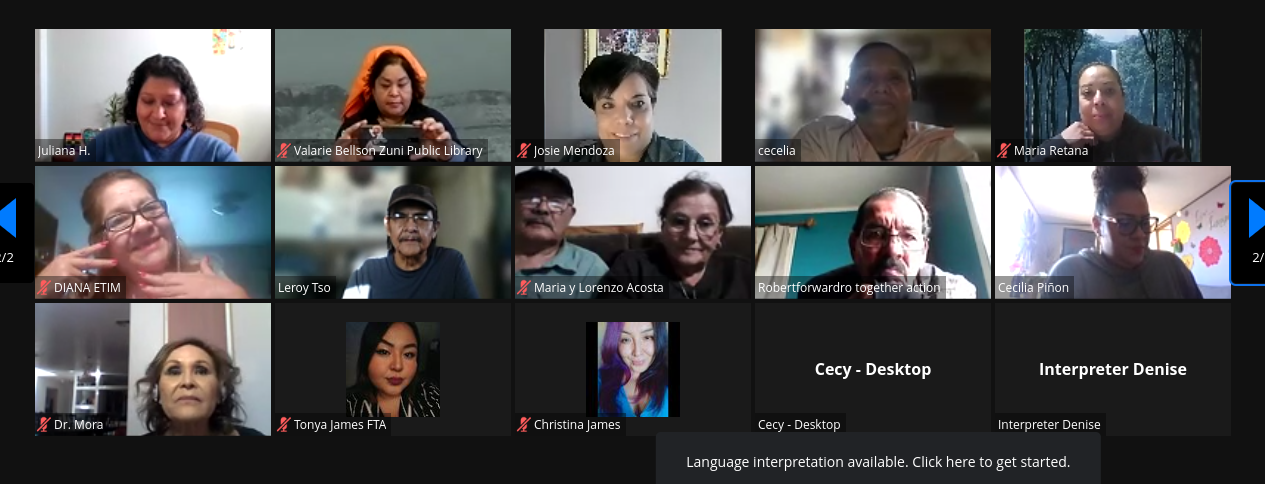HB 7 Health Care Affordability Fund Distribution

Sunday morning work at the NM Roundhouse heard HB 7 Health Care Affordability Fund Distribution in the Senate Tax, Business & Transportation Committee agenda today. It was heard and passed by a committee vote of 6:2 Strong Families New Mexico, Forward Together Action, along with NM Law and Poverty are among partners & advocates are working hard to educate the public and leadership on the need to support the Healthcare Affordability Fund so it may continue to provide coverage for families and undocumented individuals in need of affordable healthcare. Legislature needs to keep the funding levels remain constant by supporting HB7 Health Care Affordability Fund Distribution so it may continue to ensure the fund is used for providing New Mexican affordable options for healthcare.
The projected 2024 cut in revenue will threaten organizations which are critical in keeping the Healthcare Affordability Fund continuing its work for all families in New Mexico. In an informational fliers provided by NM Together for Healthcare state:
- “From 2022 to July 2024, 55% of the revenue goes to the Healthcare Affordability fund,
- Starting July 2024, only 30% of the revenue goes to the Healthcare Affordability Fund-which will significantly decrease the amount of money it receives each year ($66-$76 million LESS each year)
Fully funded the Office of the Superintendent of Insurance budget requests, as recommended by the LFC, which will:
- Continue lowering premiums for small businesses,
- Continue lowering costs for coverage on the Exchange including $0 premium plans for Native Americans who make under 3x the federal poverty line,
- Continue helping people who are disenrolled from Medicaid due to the end of the Public Health Emergency transition to the Exchange, and,
- Fully fund a health plan for New Mexico immigrant residents who can't enroll in Exchange plans or Medicaid. Immigrants work hard, pay taxes, contribute to the economy, raise families, and make our community great!” (NM Together for Healthcare).
During this time, learning how a bill becomes a law is highlighted in civic engagement opportunities by Strong Families New Mexico to support the hard work of partners like NM Law & Poverty. Currently, SFNM is continuing education on how a BILL becomes a law.
Step 1 Introducing a Bill: Anyone can bring forth an idea for a new law or the idea to change or get rid of an existing law. This can come from community member(s), legislators, corporations, or organizations. “A member of the House of Representatives or the Senate can introduce a bill. The member who introduces the bill is called the sponsor. Anyone can co-sponsor a bill, including members from different political parties.”
Step 2 Send to Committee: When the bill is introduced it is assigned a number & a committee. The House of Representatives (16 committees) and the Senate (9 committees) combined have 25 committees in all.
Step 3 Committee Hears the Bill: From there committees study the bill holding hearings where testimony for support or opposition of the bill is presented. Suggestions or amendments may be made at that time from members of the committee for consideration of the bill presented. Public testimony along with expert testimony is considered for proposed amendments followed by a committee vote.
It is during this time community voices are lifted through testifying in committee hearing or by participation of activities referred to as Call To Action. If anyone is limited in getting to Santa Fe to participate, strong community organizing and capacity building has proven to be strong methods of emailing & calling members of committees to share support and concerns. NMlegis.gov site can be utilized to track bills, hear committee debates, and navigate to learn who our state legislative body is.
Step 4 Floor Action: When a bill is voted on and a Due Pass (or sometimes, Do Not Pass issued kills the bill) is recommended the bill heads back to the House or Senate Chamber (where it was introduced). At this Third Reading, a bill will enter final debate on the floor with amendments to be discussed and voted on. During this stage, a bill might or might not move forward depending on votes cast for Pass or Not Pass. Community leaders and partners can visit the Roundhouse by showing up, call legislators, or send emails to express their support or opposition to a bill. This is the time to tell your story to the leadership of New Mexico by one on one interaction.
Step 5 Governor's Desk: Finally, when a bill passes both the chambers there are three possibilities while waiting for the Governor’s Approval.
- “Governor signs the bill,
- Governor vetoes (or rejects) the bill. The House of Representatives and Senate may override the veto by a two-thirds vote from each chamber, or,
- Governor takes no action. If the Governor does not sign or veto the bill by the end of the 30 day period, the bill is killed by what is called a “pocket veto.” (Strong Families New Mexico, State based advocacy and action program).
As the 30 day session nears an end, please make every effort to reach out to your representative. By clicking on the link above to connect with your leaders the first thing you can do is find your representative. The quickest way to connect is to call their office with the listed number or send an email. A charting with photos and contact information for reaching them. We are thankful for our leadership and their staff who are working tirelessly on this Super Bowl LVIII Sunday on behalf of the people.
Elahkwa for the healthcare teams compromised of 7 Strong Families New Mexico advocacy leaders and 23 SFNM community leaders from Bernalillo, Doña Ana, and McKinley County for continued awareness and education so all families can thrive!
